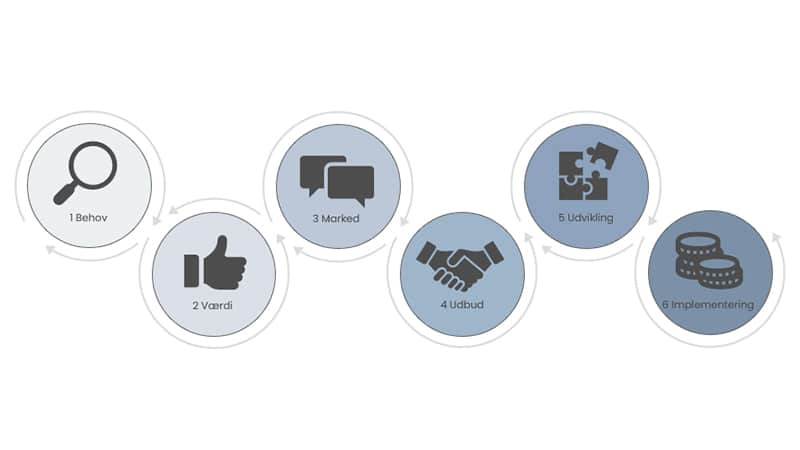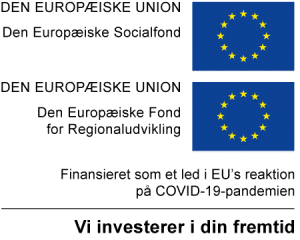We must ensure better implementation by using the Danish Procurement Act’s innovative procurement models

One of the most difficult stages of Public-Private Innovation (PPI) is its implementation. Again and again, we hear from companies and the public sector that an innovation project did not result in a sale. Lighthouse Life Science has launched a new initiative to support the work for new use of innovative public procurement models.
The public sector risks losing out on many companies’ innovative power because the route from clinical need to full implementation – and thus a business – is not included in the project from the start.
This is the opinion of, among others, Niels Damgaard-Jensen, partner in the company Sincera, and he is backed up by experience from a number of Danish Life Science Cluster’s approx. 200 company members. This is one of the reasons Lighthouse Life Science has launched an initiative to support the regions in making better use of the Danish Public Procurement Act’s innovative procurement models to enter collaborations on PPI.
Better collaboration between innovation and procurement
For a little more than a year, the Procurement Department of the Capital Region of Denmark has been striving to improve the organization’s capacity to use the innovative procurement models that became available to public institutions with the Danish Public Procurement Act in 2016. This effort is supported by Lighthouse Life Science supports, which is led by project manager Louise Brink Thomsen.
“Today, we run too many decentralized needlestick projects that end up not providing value for either the company or the region – among other things because the implementation work is not considered from the start and becomes too resource-intensive in relation to the value the solution provides and the income for the company. According to Louise Brink Thomsen, the public sector must become better at joining forces on our challenges, and we must strengthen the collaboration between the public innovation units and procurement departments.
 Implementation must be a part of the innovation process
Implementation must be a part of the innovation process
The Capital Region of Denmark takes the lead in creating an organizational foundation for the deployment of innovative procurement models in collaboration with the other regions. Among other things, the project will develop a new business procedure and contract templates as well as a competence boost for the employees in the area. In addition, we need help from the market, Louise Brink Thomsen says.
“In the future, the implementation must to a greater extent be part of a PPI contract, for the benefit of all partners. When faced with a challenge, we need to be more careful about not asking for a specific product. Instead, we must demand to solve the challenge, and then it is up to the market whether a relevant product already exists, or whether a company or a consortium of companies will sell us an innovation process that also includes an implementation, Louise Brink Thomsen explains.
Regions must join forces for more major tenders
In the procurement processes for innovative procurement models, scaling has been considered from the beginning, with an emphasis on several regions joining forces to meet their needs.
Read about: The CO-PI’s Joint Public Scaling of Innovative public Procurement (in Danish)
“As a purchasing department, we must utilize our procurement volume whenever it is possible – both across the region, but also in the form of joint public tenders for several regions or even several public institutions. Today, too many companies experience that even though their solution has been developed in collaboration with one region or municipality, it does not fit the others. Therefore, the dissemination is delayed if not all relevant customers participate during the development, Louise Brink Thomsen says.
So far, Bispebjerg Hospital in Denmark has gone into operation with the procurement models under the name Behovsfabrikken, and the first challenge they are looking for is monitoring an increased number of private rooms at the New Hospital Bispebjerg, which will be built towards 2026.
The business community looks forward to better use of the procurement model
The company Sincera is part of a pilot project eHOOD in the Lighthouse for Life Science – Healthy Weight, where they help municipalities create healthy habits for children who have grown up in vulnerable households. This group is at high risk of becoming overweight, and they often have challenges finding their way into healthy communities.
According to Niels Damgaard-Jensen, the concept has been carefully tested and displays very good results in a number of municipalities, however, the company is having difficulties in achieving sales in other municipalities. Therefore, he anticipates the Lighthouse and the Capital Region of Denmark’s engagement with the use of innovative procurement models on PPI collaborations.
“The public sector wastes money and effort by having each solution tested and documented in each municipality or region. They also lose good, well-crafted solutions from innovative startups and SMEs, because few companies in this category have the resources to market themselves to each customer. Not least because they rarely resemble each other and because preventive solutions are not given equal priority across regions and municipalities. It is more profitable for us to sell our services to private customers, where we know that a joint innovation effort will lead to a sale. Therefore, we hope that a new model for innovative public procurement will create an alignment that provides better conditions for the private sector with its suppliers of products and services that can solve many of the needs of the public sector, partner in Sincera, Niels Damgaard-Jensen says.
The project is co-funded by the European Union.

